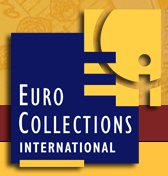
Austria 2013 25€ Tunneling Silver & Niobium BU
The obverse of the coin a present-day tunnel boring machine is depicted on the ice-blue niobium core. Its rotating motion is symbolized by the three arrows, which go up and around, from right to left – the outer edge of the tunneling bore. The twinned set of three straight lines, located in the top part of this design field, is a schematic representation of the air access tunnels that must be part of a tunnel’s overall design. The obverse’s outer silver ring shows the mountains through which the machine pierces. Also located on this side of the coin is the country of issue, “Republik Oesterreich”, Republic of Austria, the face value of 25 euros and the year of issue 2013.
The coin’s reverse makes excellent use of the niobium core to depict a twinned road tunnel entrance, similar to the many that dot the Austrian and Alpine landscapes. In the silver ring there is a depiction of a tunnel worker, wearing working clothes that were common in the late 19th and early 20th centuries, using a pneumatic drill to loosen rock. The word “Tunnelbau” (tunnel construction) is located in the lower portion of the outer silver ring.
Both sides of the coin were designed and engraved by Mint engraver Mr. Herbert Waehner.
Mr. Waehner decided not to depict a specific tunnel but rather he created a modern one that depicts the safest type of entrance to a tunnel. These long curves, stood on end, have also been proven to be the most readily recognized by drivers. Waehner also stated that he thought these entrances suited the coin design rather well “since they readily provide the perception of driving into the tunnel.”
Waehner found the tunneling theme rather challenging initially. At first he thought “to depict a static tunnel with a bunch of rocks wasn’t interesting enough.” But then, while driving his car, he “got an inspiration and the designing of both sides then went really well.” The modern interpretation of tunneling allowed him to depict both lanes of travel, as well as a mountainous area at the same time and thereby increasing its 3 dimensional effect very successfully.
The ‘New Austrian Tunneling Method’, (or NATM) which began in 1957. Engineers now continuously monitor the rock masses as the boring machine passes through the various masses of rocks. Depending on how the rock masses react as the tunnel is being created, adjustments will be made to the drilling so that that stress and load factor of the rock masses become part of the finished engineered design. Thereby using strength of the surrounding rock to reinforce the tunnel, and complemented by the supports added to hold up areas of the rock load.
The new 25-euro coin is issued with a maximum mintage of 65,000 pieces and is struck in special uncirculated quality only. It has a diameter of 34 mm and contains 9 grams of 900 fine silver in the outer ring. The core consists of 6.5 grams of 998 pure niobium and has a piercing ice blue color. Each coin is encapsulated, boxed and accompanied by a numbered certificate of authenticity.





No comments:
Post a Comment